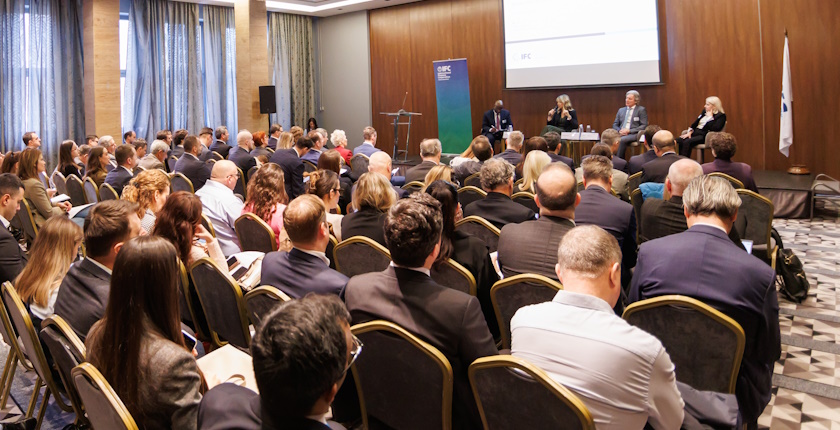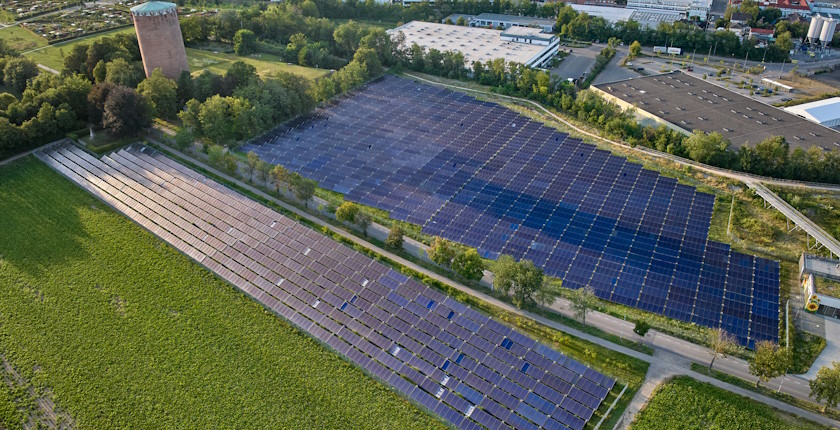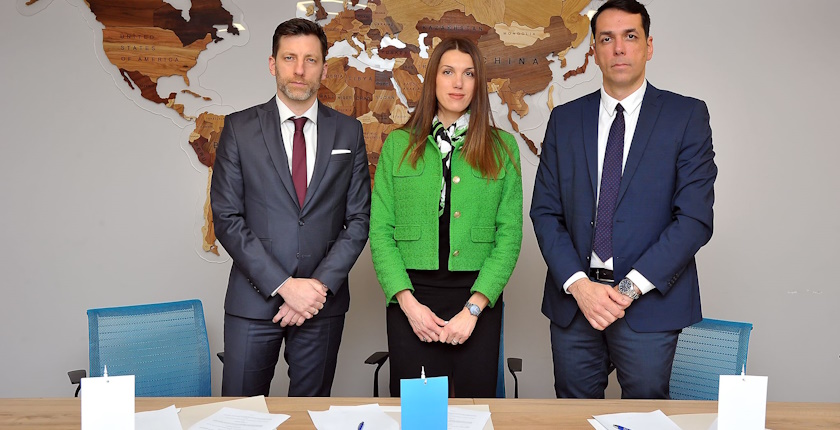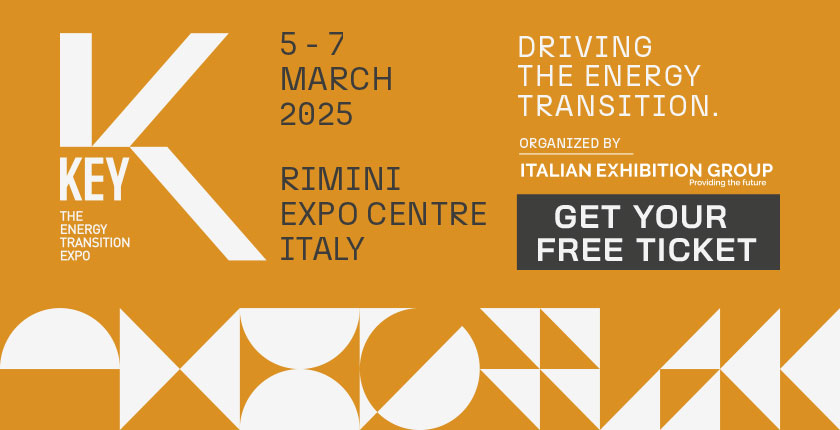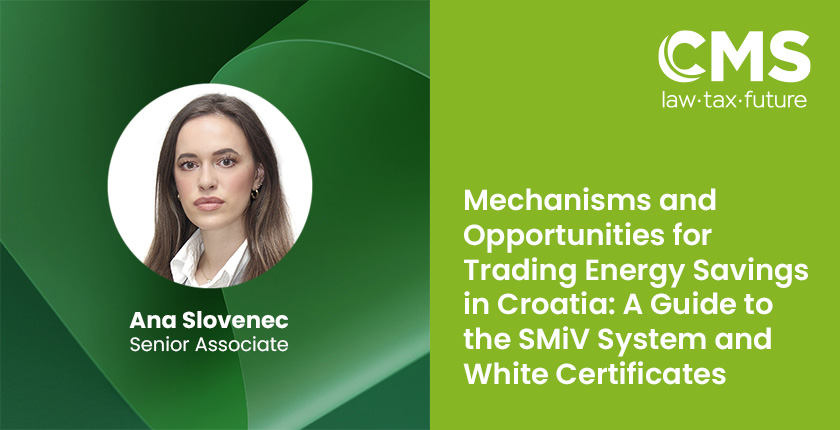
Mechanisms and opportunities for trading energy savings in Croatia: A guide to the SMiV system and white certificates
Author: Ana Slovenec, Senior Associate at Bardek, Lisac, Mušec, Skoko and partners in cooperation with CMS Reich-Rohrwig Hainz
Croatia’s energy savings trading system, governed by the Energy Efficiency Act and supported by the SMiV platform, provides a structured approach to tracking, verifying, and monetizing energy efficiency measures. The system enables participants to trade energy savings through a mechanism of so-called white certificates, while defining clear roles for obligated and voluntary actors. Staying informed about the system’s requirements and processes is the first step toward turning energy efficiency into a revenue stream, as recent updates include an increase in national energy savings targets, advancements in verification methodologies, and evolving opportunities in the Croatian energy savings market.
How to generate income from trading energy savings in Croatia?
In an era where energy efficiency has become an increasingly important priority, monetizing energy savings offers a unique opportunity to turn environmental efforts into financial gains. Thanks to energy efficiency certificates, legally recognized in Croatia as “energy savings” and commonly as “white certificates” individuals and organizations can now participate in a system that tracks, verifies, and potentially capitalizes these savings.
At the heart of this process lies the System for Monitoring, Measurement, and Verification of Energy Savings (SMiV), a centralized web platform designed to systematically track energy savings resulting from energy efficiency measures and ensuring that they are accurately recorded and transferred. SMiV allows participants to verify their savings acquired on the market. It is open for participation to market participants that are, by operation of law, obliged to achieve energy savings (“obliged parties” or “OPs”), those required to register data in the SMiV, but also to all other market participants that have no such obligations but wish to earn gains on energy savings they have voluntarily achieved. This system, regulated by the Energy Efficiency Act and the Regulation on the System for Monitoring, Measuring, and Verification of Energy Savings is managed by the Croatian Ministry of Economy through its Directorate for Energy, Service for Energy Efficiency and New Technologies acting as the National Coordination Body.
Mandatory cumulative energy savings target in final energy consumption
For the period spanning from the beginning of 2021 to the end of 2030, the Energy Efficiency Act set the target for mandatory cumulative energy savings in final energy consumption at 2,993.7 kton. This target is designed to contribute to achieving the national energy efficiency objectives outlined in the Integrated National Energy and Climate Plan of Croatia for 2021–2030. The target is aimed to be achieved, among other, by mandatory energy savings imposed on obliged parties. Obliged parties can either achieve energy savings by their own energy savings measures, or by buying energy savings from other parties, either other obliged parties, or more frequently, from parties that voluntarily achieved and now wish to sell them.
In line with Directive (EU) 2023/1791, Croatia has recently recalculated its cumulative energy savings target and submitted the updated figure to the European Commission as part of the draft revised National Energy and Climate Plan. The total cumulative savings target for the 2021–2030 period has been increased by 44%, from 2,993.7 kton to 4,313.6 kton. To align with this update, amendments to the Energy Efficiency Act are currently in progress.
Who participates in the SMiV system by default and who can participate by choice?
Mandatory participants of the SMiV system are obliged parties and reporting parties. These entities will be penalised should they fail to submit data on achieved energy savings to the system.
Obliged parties are energy suppliers and all their associated entities that are energy suppliers, provided that in the year preceding the last year, they supplied more than 50 GWh of energy to final customers or to distribution stations selling energy to final customers. These parties must compensate the Environmental Protection and Energy Efficiency Fund for any unmet portion of their energy savings obligation, whether achieved directly or acquired from other participants.
Reporting parties are public sector bodies, energy service providers, subsidy providers, and transmission and distribution system operators. Both entities are required to enter the data in the SMiV as soon as the energy efficiency improvement measure has been implemented, and no later than 15 February of the current year for all measures implemented in the previous year, or always upon the request of the National Coordination Body. Additionally, they must appoint at least one person responsible for data entry and notify the National Coordination Body of this appointment.
Participants other than the obliged parties and reporting parties participate in the SMiV platform by choice. These participants independently financed and implemented energy efficiency improvement measures or acquired energy savings from another party without having statutory obligation to achieve savings and now wish to sell them or transfer them to obliged parties and/or reporting parties.
How are energy savings demonstrated and what can be considered an energy efficiency improvement measure?
The methodology for assessing the expected impacts of individual energy efficiency measures follows a bottom-up (BU) approach to evaluating energy savings. This approach uses mathematical formulas to calculate unit energy savings (UFES), which are expressed per unit relevant to the specific energy efficiency measure being considered. Total energy savings in final consumption (FES) are calculated by multiplying the UFES value by the relevant influencing factor for the period under review and summing the results of all individual projects within a given measure.
The calculation of UFES is based on the difference in specific energy consumption “before” and “after” implementing the energy efficiency improvement measure. When determining how much savings from implemented measures contribute to achieving national energy savings targets, the measure’s lifespan is critical. The lifespan represents the number of years during which the calculated annual energy savings remain valid and can be counted toward the national target.
Energy savings are demonstrated by the Energy Savings Study, which is prepared and signed by authorized professionals in the field of architecture, construction, mechanical engineering, electrical engineering, or those qualified to conduct energy audits and certify energy efficiency for buildings or large enterprises. Authorized professionals must be from the field relevant to the specific energy efficiency improvement measure for which the study is being prepared. By signing the Energy Savings Study, they guarantee the accuracy of the energy savings calculations and the validity of the submitted supporting evidence.
Any energy efficiency improvement measure is acceptable as long as the methodology for calculating savings and the outline of the new annual and cumulative energy savings can be provided in the Energy Savings Study. The Regulation on the System for Monitoring, Measuring, and Verification of Energy Savings provides prescribed formulas for calculating energy savings from specific measures. These measures include informational measures (such as educational campaigns on energy efficiency, renewable energy, and energy-efficient appliances), organizational measures (such as implementing smart metering systems for monitoring electricity, heating, gas, and water consumption), measures in centralized heating systems, transportation, industry, and measures in residential and non-residential buildings. Examples of the latter include installing photovoltaic solar modules, solar thermal systems for hot water heating, heat pumps, and automated systems for regulating heating, lighting, and electricity consumption in buildings, etc.
The Energy Savings Study is submitted electronically to the SMiV, where it is verified by the National Coordination Body to ensure transparency and accountability. Following the verification, the National Coordination Body confirms that the energy savings have been achieved and are attributed to the energy savings holder.
Trading energy savings: current opportunities and limitations
Although the SMiV currently serves as a repository for verified energy savings, it has not yet been designed to operate as a functional energy savings exchange platform. However, this does not mean that energy savings cannot be traded. Trading takes place outside the SMiV, through private transactions for the purchase and/or transfer of savings. Once the transaction is completed, the details are submitted to the National Coordination Body for registration in the SMiV. The transfer of savings to the new holder is finalized at the moment of registration in the SMiV.
The system then adjusts the savings balance for both the transferring and receiving parties accordingly. Each energy savings holder can monitor their verified savings through their profile in the SMiV.
The free market for energy savings
Under current regulations, energy savings can be bought and sold in a free market, with prices being privately negotiated between the involved parties. While these agreements are submitted to the SMiV for record-keeping, their financial details are typically redacted to ensure confidentiality while maintaining regulatory compliance.
Unlocking the potential of energy savings trading
As regulations evolve and awareness increases, the SMiV platform is expected to incorporate additional features that will facilitate the direct exchange of energy savings between various players, thereby expanding and enhancing the market. For those looking to capitalize on this opportunity, staying informed about the system’s requirements and processes is the first step toward turning energy efficiency into a revenue stream.
Author: Ana Slovenec, Senior Associate at Bardek, Lisac, Mušec, Skoko and partners in cooperation with CMS Reich-Rohrwig Hainz
Croatia’s energy savings trading system, governed by the Energy Efficiency Act and supported by the SMiV platform, provides a structured approach to tracking, verifying, and monetizing energy efficiency measures. The system enables participants to trade energy savings through a mechanism of so-called white certificates, while defining clear roles for obligated and voluntary actors. Staying informed about the system’s requirements and processes is the first step toward turning energy efficiency into a revenue stream, as recent updates include an increase in national energy savings targets, advancements in verification methodologies, and evolving opportunities in the Croatian energy savings market.
How to generate income from trading energy savings in Croatia?
In an era where energy efficiency has become an increasingly important priority, monetizing energy savings offers a unique opportunity to turn environmental efforts into financial gains. Thanks to energy efficiency certificates, legally recognized in Croatia as “energy savings” and commonly as “white certificates” individuals and organizations can now participate in a system that tracks, verifies, and potentially capitalizes these savings.
At the heart of this process lies the System for Monitoring, Measurement, and Verification of Energy Savings (SMiV), a centralized web platform designed to systematically track energy savings resulting from energy efficiency measures and ensuring that they are accurately recorded and transferred. SMiV allows participants to verify their savings acquired on the market. It is open for participation to market participants that are, by operation of law, obliged to achieve energy savings (“obliged parties” or “OPs”), those required to register data in the SMiV, but also to all other market participants that have no such obligations but wish to earn gains on energy savings they have voluntarily achieved. This system, regulated by the Energy Efficiency Act and the Regulation on the System for Monitoring, Measuring, and Verification of Energy Savings is managed by the Croatian Ministry of Economy through its Directorate for Energy, Service for Energy Efficiency and New Technologies acting as the National Coordination Body.
Mandatory cumulative energy savings target in final energy consumption
For the period spanning from the beginning of 2021 to the end of 2030, the Energy Efficiency Act set the target for mandatory cumulative energy savings in final energy consumption at 2,993.7 kton. This target is designed to contribute to achieving the national energy efficiency objectives outlined in the Integrated National Energy and Climate Plan of Croatia for 2021–2030. The target is aimed to be achieved, among other, by mandatory energy savings imposed on obliged parties. Obliged parties can either achieve energy savings by their own energy savings measures, or by buying energy savings from other parties, either other obliged parties, or more frequently, from parties that voluntarily achieved and now wish to sell them.
In line with Directive (EU) 2023/1791, Croatia has recently recalculated its cumulative energy savings target and submitted the updated figure to the European Commission as part of the draft revised National Energy and Climate Plan. The total cumulative savings target for the 2021–2030 period has been increased by 44%, from 2,993.7 kton to 4,313.6 kton. To align with this update, amendments to the Energy Efficiency Act are currently in progress.
Who participates in the SMiV system by default and who can participate by choice?
Mandatory participants of the SMiV system are obliged parties and reporting parties. These entities will be penalised should they fail to submit data on achieved energy savings to the system.
Obliged parties are energy suppliers and all their associated entities that are energy suppliers, provided that in the year preceding the last year, they supplied more than 50 GWh of energy to final customers or to distribution stations selling energy to final customers. These parties must compensate the Environmental Protection and Energy Efficiency Fund for any unmet portion of their energy savings obligation, whether achieved directly or acquired from other participants.
Reporting parties are public sector bodies, energy service providers, subsidy providers, and transmission and distribution system operators. Both entities are required to enter the data in the SMiV as soon as the energy efficiency improvement measure has been implemented, and no later than 15 February of the current year for all measures implemented in the previous year, or always upon the request of the National Coordination Body. Additionally, they must appoint at least one person responsible for data entry and notify the National Coordination Body of this appointment.
Participants other than the obliged parties and reporting parties participate in the SMiV platform by choice. These participants independently financed and implemented energy efficiency improvement measures or acquired energy savings from another party without having statutory obligation to achieve savings and now wish to sell them or transfer them to obliged parties and/or reporting parties.
How are energy savings demonstrated and what can be considered an energy efficiency improvement measure?
The methodology for assessing the expected impacts of individual energy efficiency measures follows a bottom-up (BU) approach to evaluating energy savings. This approach uses mathematical formulas to calculate unit energy savings (UFES), which are expressed per unit relevant to the specific energy efficiency measure being considered. Total energy savings in final consumption (FES) are calculated by multiplying the UFES value by the relevant influencing factor for the period under review and summing the results of all individual projects within a given measure.
The calculation of UFES is based on the difference in specific energy consumption “before” and “after” implementing the energy efficiency improvement measure. When determining how much savings from implemented measures contribute to achieving national energy savings targets, the measure’s lifespan is critical. The lifespan represents the number of years during which the calculated annual energy savings remain valid and can be counted toward the national target.
Energy savings are demonstrated by the Energy Savings Study, which is prepared and signed by authorized professionals in the field of architecture, construction, mechanical engineering, electrical engineering, or those qualified to conduct energy audits and certify energy efficiency for buildings or large enterprises. Authorized professionals must be from the field relevant to the specific energy efficiency improvement measure for which the study is being prepared. By signing the Energy Savings Study, they guarantee the accuracy of the energy savings calculations and the validity of the submitted supporting evidence.
Any energy efficiency improvement measure is acceptable as long as the methodology for calculating savings and the outline of the new annual and cumulative energy savings can be provided in the Energy Savings Study. The Regulation on the System for Monitoring, Measuring, and Verification of Energy Savings provides prescribed formulas for calculating energy savings from specific measures. These measures include informational measures (such as educational campaigns on energy efficiency, renewable energy, and energy-efficient appliances), organizational measures (such as implementing smart metering systems for monitoring electricity, heating, gas, and water consumption), measures in centralized heating systems, transportation, industry, and measures in residential and non-residential buildings. Examples of the latter include installing photovoltaic solar modules, solar thermal systems for hot water heating, heat pumps, and automated systems for regulating heating, lighting, and electricity consumption in buildings, etc.
The Energy Savings Study is submitted electronically to the SMiV, where it is verified by the National Coordination Body to ensure transparency and accountability. Following the verification, the National Coordination Body confirms that the energy savings have been achieved and are attributed to the energy savings holder.
Trading energy savings: current opportunities and limitations
Although the SMiV currently serves as a repository for verified energy savings, it has not yet been designed to operate as a functional energy savings exchange platform. However, this does not mean that energy savings cannot be traded. Trading takes place outside the SMiV, through private transactions for the purchase and/or transfer of savings. Once the transaction is completed, the details are submitted to the National Coordination Body for registration in the SMiV. The transfer of savings to the new holder is finalized at the moment of registration in the SMiV.
The system then adjusts the savings balance for both the transferring and receiving parties accordingly. Each energy savings holder can monitor their verified savings through their profile in the SMiV.
The free market for energy savings
Under current regulations, energy savings can be bought and sold in a free market, with prices being privately negotiated between the involved parties. While these agreements are submitted to the SMiV for record-keeping, their financial details are typically redacted to ensure confidentiality while maintaining regulatory compliance.
Unlocking the potential of energy savings trading
As regulations evolve and awareness increases, the SMiV platform is expected to incorporate additional features that will facilitate the direct exchange of energy savings between various players, thereby expanding and enhancing the market. For those looking to capitalize on this opportunity, staying informed about the system’s requirements and processes is the first step toward turning energy efficiency into a revenue stream.


